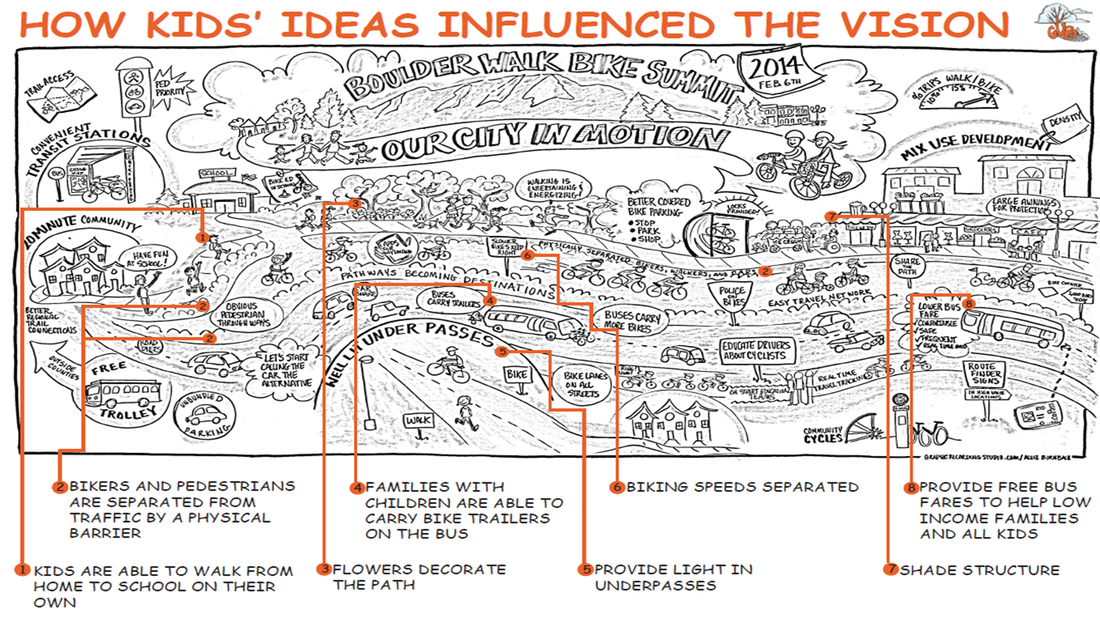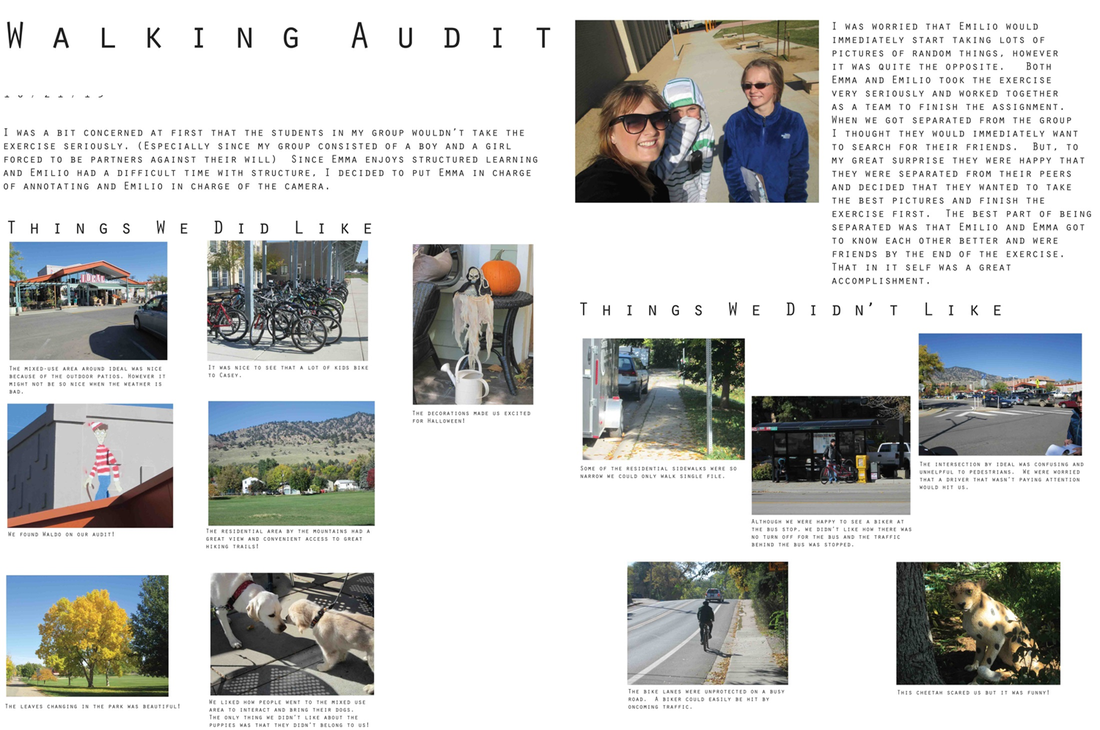Boulder's Transportation Master Plan
GO Boulder initiated a Transportation Master Plan Update to create a blueprint for creating safe, convenient, and sustainable transportation options and to gather feedback on how to best create complete streets to accommodate all forms of transportation (walk, bike, transit, and car).
Growing Up Boulder partnered with GO Boulder to:
We accomplished this through map annotations, interactive presentations, and walk audits. GUB partnered with Casey Middle School's Applied Science Class (a partnership between Casey and CU's Program in Environmental Design), CYE Graduate Students, Youth Services Initiative, Whittier International Elementary, and Boulder High School. Information from the Transportation Master Plan was integrated into a compilation drawing (above) that incorporated ideas from our outreach and a 2-day bike-walk summit. We have highlighted how children's ideas influenced the vision in orange.
Some of our findings for middle and high school students include:
For Whittier students, more than 50% of children bike, walk, scooter, or skateboard to school and to their after-school and weekend destinations.
Growing Up Boulder partnered with GO Boulder to:
- Uncover whether and in what ways active transportation and independent mobility are connected to proximity to bike facilities, schools, and parks and other youth-identified social spaces,
- Empower Boulder’s youth in public decision making, and
- Make an impact on the Transportation Master Plan Update
We accomplished this through map annotations, interactive presentations, and walk audits. GUB partnered with Casey Middle School's Applied Science Class (a partnership between Casey and CU's Program in Environmental Design), CYE Graduate Students, Youth Services Initiative, Whittier International Elementary, and Boulder High School. Information from the Transportation Master Plan was integrated into a compilation drawing (above) that incorporated ideas from our outreach and a 2-day bike-walk summit. We have highlighted how children's ideas influenced the vision in orange.
Some of our findings for middle and high school students include:
- Travel mode (walk, bike, RTD bus, school bus, or car) differs based on distance to school, with kids living closer to school being more active
- Travel mode differs based on the presence of arterial roads to cross, with arterial roads creating barriers
- Travel mode differs based on gender, with boys biking more and girls being driven more
- High school students live further from school than middle school students
For Whittier students, more than 50% of children bike, walk, scooter, or skateboard to school and to their after-school and weekend destinations.
Walk Audits

We gave students cameras and an icon sheet to help guide them in the types of things we wanted them to take pictures of (left). These included intersections, people moving through the streets and the types of transportation, green spaces and features, residential streets, mixed use streets, and any other type of space that they wanted to document (free!). We learned that in general they support bike transportation, like separated lanes for bikes and pedestrians, prefer well-maintained sidewalks and would like to see more separation of cars from people and more aesthetic amenities at bus stops. They also liked green medians and other green street features. Reflection summaries from Environmental Design students on the walk audits and what youth had to say are given below.





